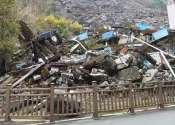Lake tsunamis pose significant threat under warming climate
Cowee Creek, Brabazon Range, Upper Pederson Lagoon—they mark the sites of recent lake tsunamis, a phenomenon that is increasingly common in Alaska, British Columbia and other regions with mountain glaciers.









